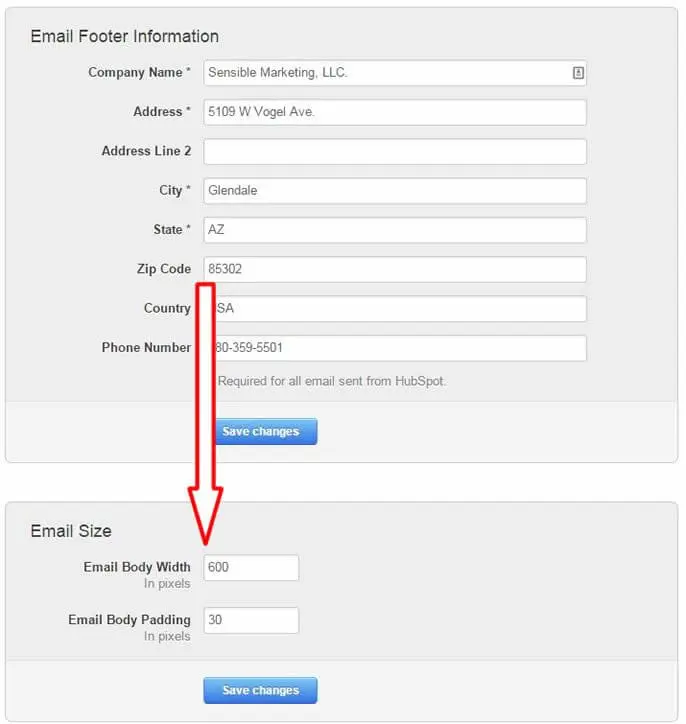 We merged with an inbound marketing agency 3 months ago, and spent the first quarter of 2015 working on campaigns to grow our visitors (up 32% in 90 days) and contacts (up 242% in 90 days). Now we’re taking a look at how to cleanup our email database and reset ( or confirm that we don’t need to reset) some of the email configurations in HubSpot.
We merged with an inbound marketing agency 3 months ago, and spent the first quarter of 2015 working on campaigns to grow our visitors (up 32% in 90 days) and contacts (up 242% in 90 days). Now we’re taking a look at how to cleanup our email database and reset ( or confirm that we don’t need to reset) some of the email configurations in HubSpot.
Databases tend get dirty over time. Many of the leads have been accumulated over the years and remain uncontacted except for the occasional sales email, eNewsletter blast or tradeshow invite.
With the right inbound marketing strategy, some contacts will immediately engage with your brand. Other contacts will re-engage over time. Still others will never take action on your inbound marketing activity. This is true for a clean database or a messy one. Cleaning the your HubSpot database occasionally will help to acquire new and better leads more quickly rather than working with the same old bad leads you developed over time.
We recently talked with a HubSpot customer who has had HubSpot for 2 years, but only showed 457 unique visitors to their website last month. Egads! As part of the onboarding process, we will do this same email review and cleanup with them, so I thought it would make sense to document this so that others can learn how to setup HubSpot email and how to clean the HubSpot database, too.
Delete contacts who have unsubscribed or bounced
If someone opts-out from receiving your email (unsubscribes), they are a good candidate for removing from your database. Likewise, if someone is bouncing for a permanent reason, like an invalid or blocked email address, they’re a hard bounce and should be removed from your list.
To delete all the unsubscribed or bounced email addresses in HubSpot, navigate to Content > Email and click the link for Export Unsubscribes and Bounces on the left. Send this exported file to yourself.
Open this CSV file and delete all columns except Email. Then import this file back into HubSpot (Contacts > Import > Import a new file). Name the list Unsubs for Deletion (or whatever). Be sure to map the Email Address column in your CSV file to the Email property in HubSpot. Mark the three list validity questions True and add your initials; then click Import Contacts.
Then go to Contacts > Lists, find the list you just imported, and click to open it. Check the checkbox at the top left of the list header and then click Delete. Note that deleting contacts is irreversible.
Finally delete your empty list (List actions > Delete this list > Delete).
 In our case, I eliminated 788 hard bounces and a few dozen unsubscribes.
In our case, I eliminated 788 hard bounces and a few dozen unsubscribes.
Delete email aliases
This is also a good time to remove email aliases like support@companyname.com or info@company.com. They really aren’t valid email addresses for inbound marketing. Likely these email addresses got here through someone who didn’t want followup emails from you in the first place.
Go to Contacts > Lists > Create new list, name it DELETE aliases, make it a Static list, and start adding the list criteria.
 Grouping the first part of email addresses like this in one box works as an OR statement. To do this, type your first email address, press Enter and then type an additional email address. Customize this list as you see fit, then click Create list.
Grouping the first part of email addresses like this in one box works as an OR statement. To do this, type your first email address, press Enter and then type an additional email address. Customize this list as you see fit, then click Create list.
Delete the contacts and then delete the empty list, as you did above. This process sliced another 391 contacts off my list.
Am I sad about the loss of 1,238 contacts?
Only for a moment. . . then I remember that these were useless email addresses anyway. Now I have a list of people who (at least at some time) are or were interested in our content. I’ve weeded out all the excess and am getting down to data that matters.
Now one thing remains, developing a re-engagement campaign for folks who haven’t come to the website in 12 months. That’s the topic of my next blog post in the HubSpot Cleanup series!
Set your email size to 600 pixels
Part of getting your email settings ready lies in setting the email body width. It may seem like such a small thing to have to worry about when setting up your email for sending, but it’s an important decision to make. When designing an email, you want to make sure it’s universal and that as many email clients as possible can display it well. It’s good to review best practices of email design before you ultimately make your decision, but know that you should try to keep your email width at or under 600 pixels.
Setting the email body width within Email Settings will apply to all your existing email drafts and any new emails you create and send going forward.
To do this, go to Content > Email > Manage Settings. Email Size is a very small section of your email settings and lives just below the Email Footer Information section. Scroll down to see it.

You can see above that the Email Body Width is set to 600 and the Email Body Padding is set to 30 (for a total width of 660px). The Email Body is where your content will actually live – any text or images you insert will live there. The Email Body Padding is the space within the Email Body between the text and the border. It’s a good idea to have some padding so that your text or images don’t hit the edge of the email but have some space to breathe on the sides. Aesthetically, this can be a good choice to make.
While you’re on this Settings page, check the following to make sure they’re configured the way you want:
- Email Footer Information
- Resubscription Emails – I can’t think of any reason not to enable this. You want people who have previously unsubscribed to your email to be able to re-subscribe in the future, don’t you? More on this in my next HubSpot Cleanup post.
- Compliance Copy Email – If you are in an industry impacted by SOX or other compliance requirements, this could be really helpful.
- Double Opt-In
- Tracking
Click the “What is this?” link on any of these items for an explanation of how to use these settings. Typically, they will all be set up properly already.
Set up your email sending domains
Setting up an email sending domain within HubSpot gives you the ability to remove the “via hubspot.com” that you sometimes see when you send an email from HubSpot.

The ability to remove the “via yourdomain.com” from emails allows you to have more attribution over your emails. This helps reduce confusion for the end recipient who should focus on the company sending email, not the client they are sending it through.
Email sending domains are used for DKIM (Domain Keys Identified Mail) email authentication, which is a form of email authentication used to verify a sender’s identity. By setting up your email sending domain to your domain’s DNS, you allow HubSpot to encrypt your message and “sign” it using your domain’s unique signature. This adds a layer of security behind-the-scenes that enables providers like Gmail to remove the “via hubspot” message for their users.
You will need access to edit your DNS records with your name server host. Follow HubSpot’s instructions to setup your email sending domain. If you do not have access to edit your site’s DNS, you can forward this article to your administrator.
Takeaways
If you are taking over as the new head of marketing, or are going through a merger, you’ll want to review and reset some of your HubSpot email settings and clean up the email database. Even if you’re not engaged in these company-changing events right now, it makes sense to clean your database every 6-12 months and to set up an email sending domain for your company.
Next up in this series of how-to posts is developing a re-engagement campaign in HubSpot for contacts who haven’t come back to your website in 12 months.
Photo courtesy of Prime Cleaning Solutions.




